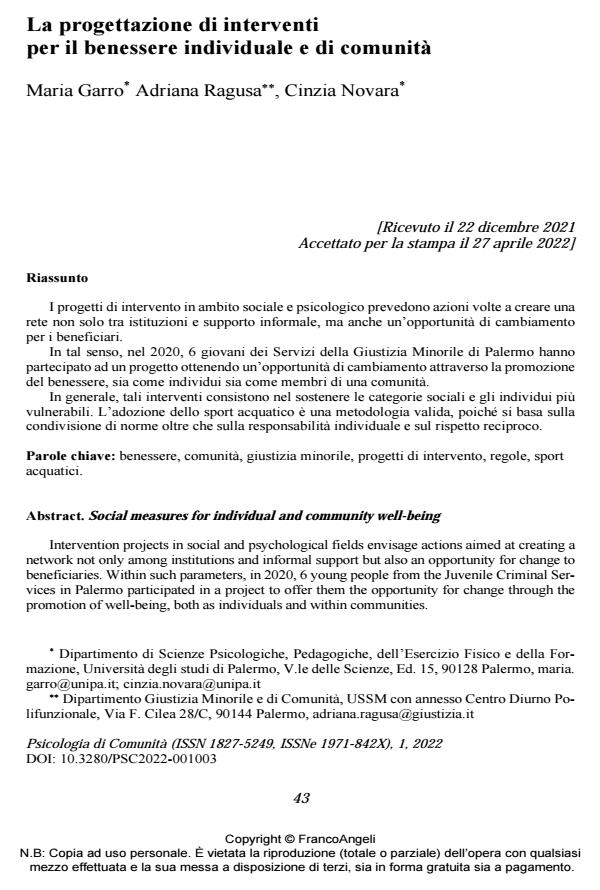Social measures for individual and community well-being
Journal title PSICOLOGIA DI COMUNITA’
Author/s Maria Garro Adriana Ragusa, Cinzia Novara
Publishing Year 2022 Issue 2022/1
Language Italian Pages 17 P. 43-59 File size 255 KB
DOI 10.3280/PSC2022-001003
DOI is like a bar code for intellectual property: to have more infomation
click here
Below, you can see the article first page
If you want to buy this article in PDF format, you can do it, following the instructions to buy download credits

FrancoAngeli is member of Publishers International Linking Association, Inc (PILA), a not-for-profit association which run the CrossRef service enabling links to and from online scholarly content.
Intervention projects in social and psychological fields envisage actions aimed at creating a network not only among institutions and informal support but also an opportunity for change to beneficiaries. Within such parameters, in 2020, 6 young people from the Juvenile Criminal Services in Palermo participated in a project to offer them the opportunity for change through the promotion of well-being, both as individuals and within communities. In general, such measures consist of supporting social categories, and vulnerable individuals. Psychological evidence suggests the adoption of sports activities as a successful methodology, as they are based on sharing standards as well as relying on individual responsibility and mutual respect.
Keywords: well-being, community, juvenile justice, interventions project, rules, watersports.
- First- and Second-Generation Migrants: Attitudes Towards Homosexuality: The Role of Generation, Gender, and Religion Gaetano Di Napoli, Maria Garro, Marco Andrea Piombo, Cinzia Novara, in Behavioral Sciences /2025 pp.1190
DOI: 10.3390/bs15091190
Maria Garro Adriana Ragusa, Cinzia Novara, La progettazione di interventi per il benessere individuale e di comunità in "PSICOLOGIA DI COMUNITA’" 1/2022, pp 43-59, DOI: 10.3280/PSC2022-001003